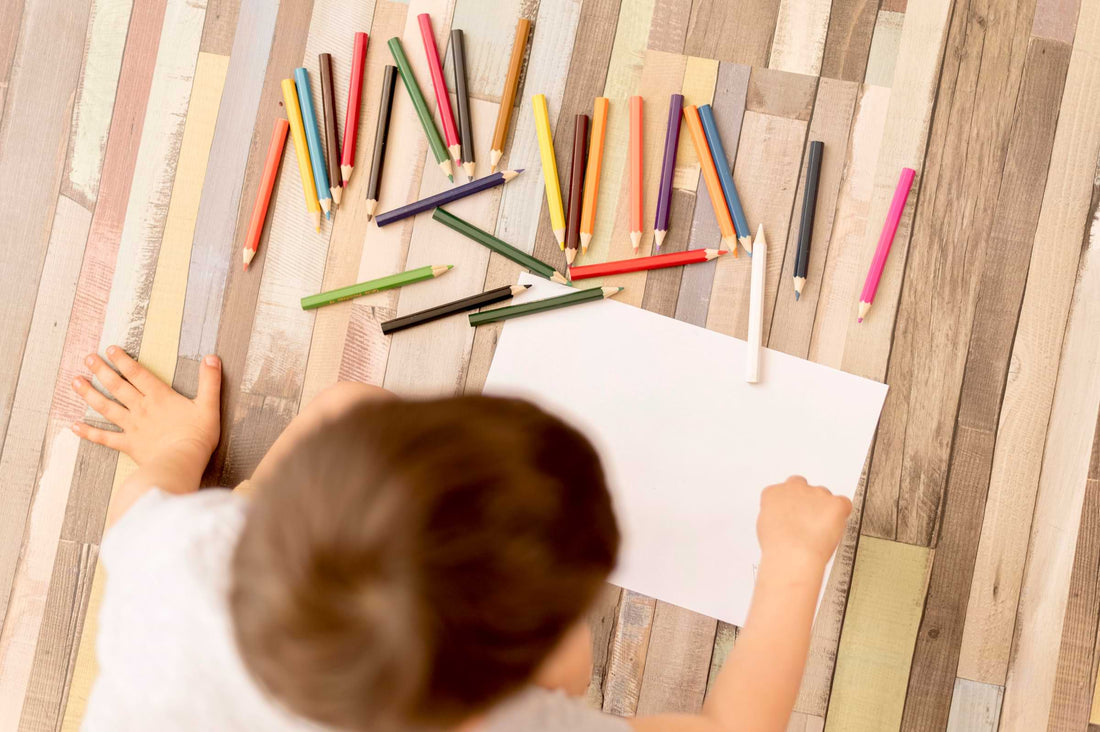Teaching your child to draw is an exciting journey that can enhance their creativity, fine motor skills, and observation abilities. Drawing is not just a way for children to express their thoughts and feelings; it's a fundamental skill that can bolster their academic and personal growth.
Here are 7 tips on how to start teaching your child to draw!
Start with Observation
Observation is the cornerstone of drawing. Encourage your child to observe the world around them with an artist's eyes, noticing details like shapes, colors, lines, and patterns. This doesn't mean they need to stare intently at objects all day; instead, it's about making them aware of their surroundings and the details that make up objects. For instance, when looking at a tree, point out the shapes of the leaves or how the branches curve.
Introduce Basic Shapes and Textures
Before diving into complex drawings, start with basic shapes and textures. Teach your child to draw simple shapes such as circles,

squares, and triangles. These shapes are the building blocks of more complex objects. For example, show them how a combination of circles and rectangles can form a car or how a tree can start from a simple rectangle and triangles for leaves. This approach helps them understand how objects can be broken down into simpler components.
The Role of Copying and Tracing
While creativity is essential, copying and tracing can play a vital role in developing drawing skills. Copying helps children understand the elements of design, like lines and shapes, and tracing can improve their muscle memory and dexterity. However, it's crucial to balance this with creative drawing to avoid stifling their imagination. Encourage them to copy simple objects or their favorite characters but also prompt them to create their own drawings based on what they've learned. This balance helps cultivate both technical skills and creativity.
Make Use of a Drawing Curriculum
Consider using a structured drawing curriculum designed for children. Such curriculums often include step-by-step lessons that build upon each other, starting from basic skills and progressing to more complex drawings. They can offer a systematic approach to learning and teaching art, even if you're not artistically inclined yourself. These lessons can provide a clear path for development and ensure that all foundational skills are covered.
Emphasize Practice and Patience
Drawing, like any skill, requires practice. Encourage your child to draw regularly, but remind them (and yourself) to be patient. Not every drawing will be perfect, and that's okay. The goal is improvement, not perfection. Celebrate their progress, no matter how small, and ensure they know that every artist started as a beginner. Make drawing a fun and stress-free activity rather than a chore.

Use Age-Appropriate Materials and Instructions
Ensure that the drawing materials and instructions are suitable for your child's age and skill level. Younger children may benefit from thicker pencils or crayons that are easier to grip, while older children can handle more detailed and precise tools. Choose materials that will make the drawing process enjoyable and not frustrating for them. (Like our busy book! Sorry, couldn't help it!)
Encourage Exploration and Self-expression
Finally, allow your child the freedom to explore different drawing styles and mediums. Art is a personal journey, and what works for one child may not work for another. Encourage them to experiment with colors, textures, and different types of drawing paper. Most importantly, let them express themselves through their art. Every drawing tells a story, and every child has their own unique tale to tell.
Long story short, teaching your child to draw is about nurturing their ability to see, understand, and recreate the world around them in their unique way. It's a process filled with discovery, learning, and, most importantly, fun. So grab some pencils and paper, and start this creative adventure together!

